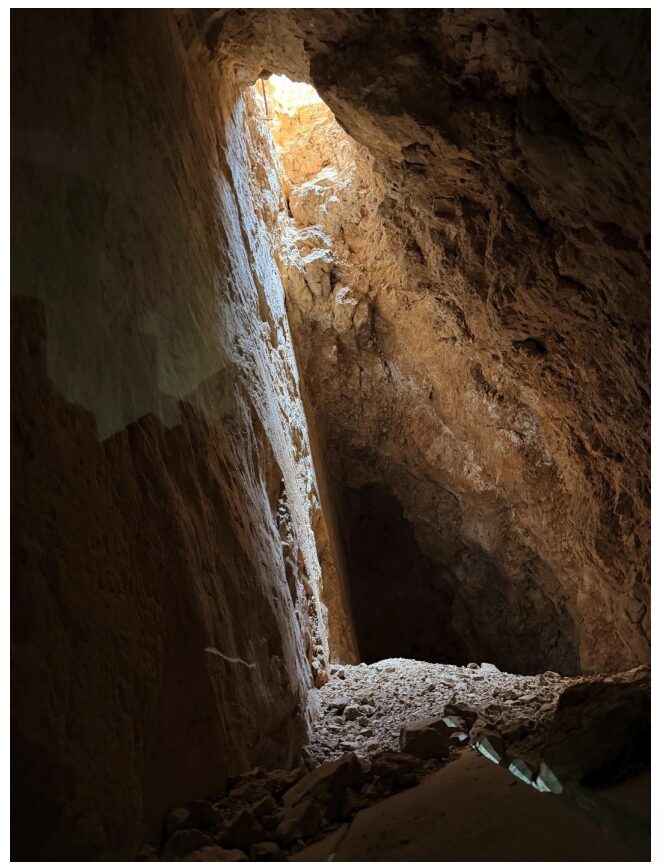Mammoth Minerals unlocks 3km of polymetallic mineralisation at Blue Dick Trend

Mammoth Minerals has found the key to unlocking the rich, polymetallic mineralisation across the Blue Dick Trend. Pic: Getty Images
- Mammoth Minerals reels in high-grade gold, silver, copper and antimony in sampling at the Excelsior project
- Results extend polymetallic mineralisation along the Blue Dick Trend to ~3km
- Petrophysical analysis of mineralisation is underway to determine optimal geophysical targeting methods
Special report: The Blue Dick Trend at Mammoth Minerals’ Excelsior gold-silver project in Nevada just got a lot bigger – with multiple trends extending to over 3km – following rock chip and channel sampling.
That work returned assays as high as 5,980g/t silver, 7.65g/t gold, 0.66% antimony, 0.55% copper and 3.85% lead, pointing to a large polymetallic system.
One sample returned 13.8% Cu, while another came in at 456g/t Ag, 3.89g/t Au, 11.6% Pb and 9.8% Zn.
Beyond the impressive assays, Mammoth Minerals’ (ASX:M79) LiDAR survey has unveiled a string of additional targets sitting parallel and along strike from the Blue Dick Trend.
These include multiple surface disturbances, such as historical prospecting pits and underground workings, that point to a much larger mineralised footprint than previously recognised.

“Major success”
M79 managing director Glenn Poole said the company’s first round sampling at the Blue Dick Trend had been a major success, extending the mineralised zone to over 3km of strike with parallel trends and returning what he described as “phenomenal grades of silver with substantial credits of gold, copper and antimony.”
He said the aim of the initial program was to gauge the scale and nature of mineralisation before embarking on more detailed mapping and sampling.
“Mapping based on the LiDAR has already outlined numerous additional surface disturbances along the Blue Dick Trend, including old prospecting pits and underground workings that are yet to be sampled,” Poole explained.
Meanwhile, Poole said diamond drilling was progressing strongly, with multiple holes submitted for analysis and first results expected within a fortnight.
“This drilling has been designed to enhance our understanding of the style, geometry and controls on the mineralisation to assist with ongoing exploration targeting,” he added.
“Mammoth has defined multiple opportunities within the Buster Gold Trend that warrant drill testing, these include priority targets such as the Buster Open Pit, which extends for approximately 375m and averages 25m width.
“To date, only three drill holes have effectively tested the down-dip extension of this pit.”
Previously from M79: Mammoth trumpets a first at its Excelsior project
Future resource on the cards
The Mammoth team is now planning to test priority targets and build the foundations for a future resource at the Buster Gold trend with samples already in the lab.
Works will kick off with petrophysical testing to understand the geophysical signature of the mineralisation and host rocks, alongside high-resolution magnetic surveys to refine drill targeting across the wider Excelsior Springs Project
Together, these datasets will help define priority zones for follow up work as the company hopes to unlock the full potential of these Gold and high-grade polymetallic systems in the heart of Nevada’s mining country.
This article was developed in collaboration with Mammoth Minerals, a Stockhead advertiser at the time of publishing.
This article does not constitute financial product advice. You should consider obtaining independent advice before making any financial decisions.

UNLOCK INSIGHTS
Discover the untold stories of emerging ASX stocks.
Daily news and expert analysis, it's free to subscribe.
By proceeding, you confirm you understand that we handle personal information in accordance with our Privacy Policy.








